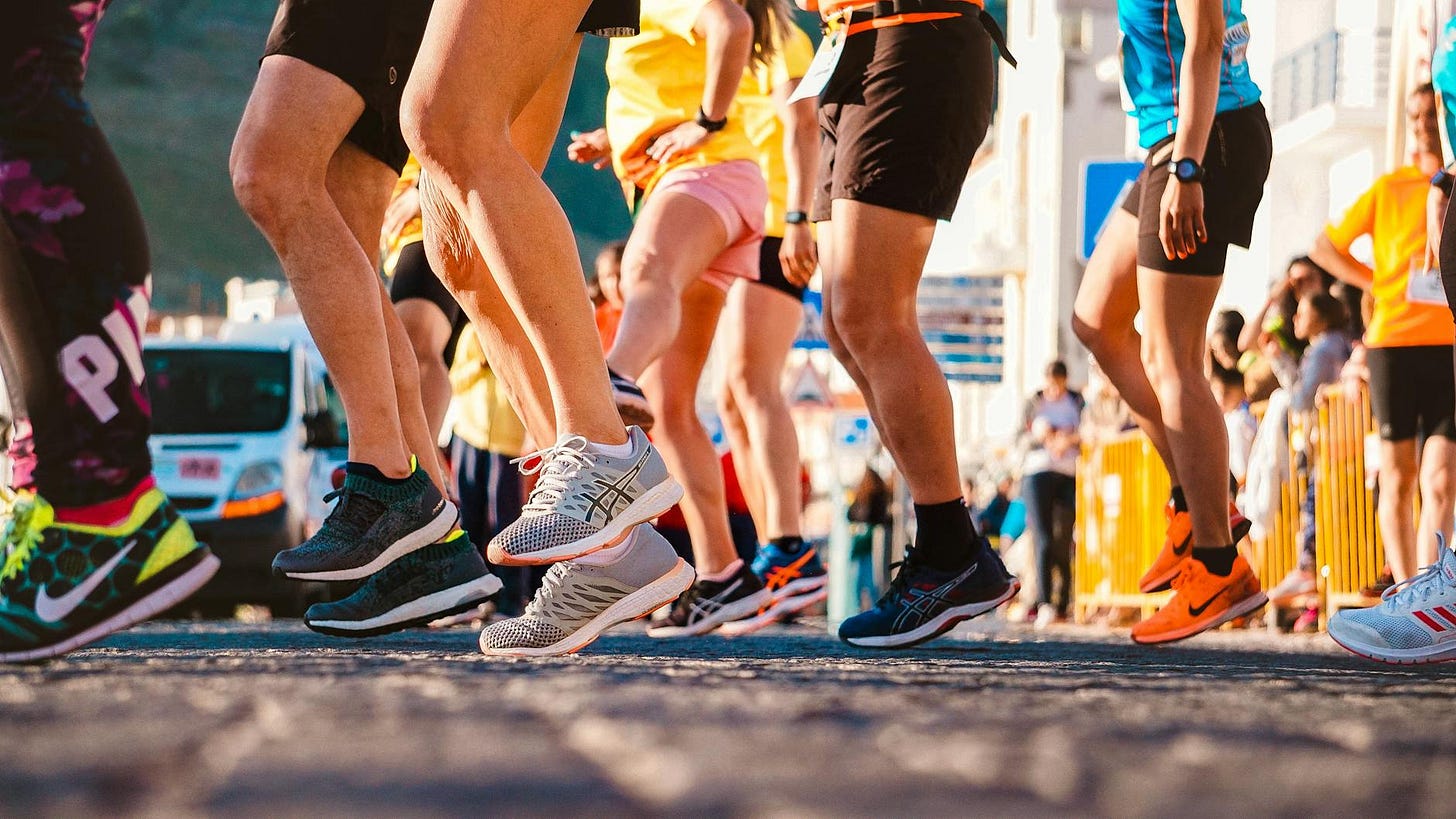Running shoes: smart investment or marketing hype?
Are multiple running shoes really necessary?
Personally, I use just one pair of shoes, the Mizuno Wave Rider 28, and in my cynicism, I quickly think: "They're just trying to sell me more products." However, I often see people online who rotate between multiple pairs of shoes. Where does this idea come from? And is there scientific evidence to support the need for different shoes for different types of training?
Running: a low-cost sport?
In theory, running is a cheap sport. You put on some sportswear and shoes, and you're good to go. But sometimes, it feels like that’s no longer the case. Nowadays, there's an overwhelming amount of options: heart rate monitors, smartwatches, earbuds, and especially shoes.
At the 1960 Olympics, Abebe Bikila set the marathon world record (2:15:16) running barefoot (source). Today, some runners claim you need 4 to 5 pairs: one for races, one for daily training, one for intervals, and one for recovery runs. Even within racing shoes, you can differentiate between 5/10 km and 21/42 km. Additionally, there are shoes for different surfaces, such as asphalt versus trails. But why do this? And does it actually make a difference?
Injury prevention
One of the main arguments for rotating running shoes is injury prevention. Research suggests that using at least two pairs of shoes can significantly reduce the risk of injuries (source). This is because each shoe has a different structure, which alters the stress on your body and helps prevent overuse injuries. Additionally, rotating shoes allows the cushioning to "bounce back" between runs, ensuring they maintain their optimal performance.
Less wear and more targeted training
Another argument is that alternating between shoes reduces wear and tear, meaning you don’t have to buy new shoes as often. Moreover, different shoes can be beneficial for different types of training. For example, you might choose a comfortable, well-cushioned shoe for recovery runs, while opting for a lightweight, more responsive shoe for interval training (source).
My own perspective
As I mentioned earlier, I initially thought this was just a marketing trick to sell more shoes. I can imagine that having multiple pairs is useful when training for a marathon. However, with my current weekly mileage of about 30 km (as I’m currently training for the Leiden Half Marathon), I believe there are more important aspects to focus on before spending money on another pair.
Conclusion
Rotating running shoes has its benefits, such as potentially reducing injuries, slowing down wear, and better aligning with specific workouts. Science supports the idea that varying shoes can help with injury prevention. However, the necessity depends on your training volume and goals. If you run a lot and train with purpose, shoe rotation can be useful. But for recreational runners with a moderate training load, a good pair of shoes should suffice. In the end, it remains a personal choice, depending on your budget, comfort, and training goals.


